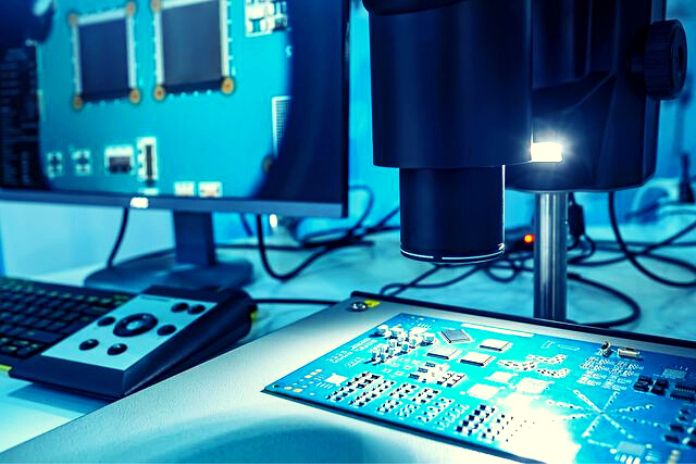Did you know that prototyping is an essential step in Design Thinking? The prototyping technique can guarantee several advantages when your company wants to develop a new product.
After brainstorming with your team, did you have a business idea and want to know if it will work and, above all, get improvement points from your users? Create a prototype!
What Is Prototyping?
Prototyping is a term that relates to the act of prototyping, that is, creating a prototype for something you want to produce and put on the market since it is one of the ways to validate ideas.
The most classic example we can cite is software prototyping; imagine that you want to test the functionality of a computer program, but you don’t want to spend lots of money.
Simple! You can create a prototype. Therefore, you will develop a final product model without all the technical quality and robustness of the existing software.
What Is Prototyping For?
The main objective would be to convey its usability and its purpose. Mainly related to software, there is the concept of MVP (Minimum Viable Product), which consists of creating a simple version to test product functionalities within an incremental cycle.
But it is worth remembering that prototyping is not only related to software. The technique can be used for the most diverse sectors, such as the automotive industry, civil construction, architecture, etc.
Another example would be to create a prototype from 3D printing of an automotive part, which would later be manufactured from plastic injection molding.
Using this technique to validate your product generates several advantages for the business. Let’s check them in the following topic.
What Are The Advantages Of Prototyping?
There are several advantages to carrying out the prototyping of the product before it launches in the market, the main ones being:
Test Functionality
Having the product pre-developed physically or virtually allows you to answer whether the product works and needs to be adjusted.
Test Usability
Through the prototype, it is possible to test the idea between the user and the prototype, understand if the product works and is user-friendly, and identify the potential improvement points.
Feedback Collection
Collecting feedback is one of the main benefits of prototyping. Listening to the target audience is the best way to gain insights and understand what needs to be improved, which directly leads to the next advantage.
Greater Assertiveness
If you’ve collected feedback, you’ll know better what the user needs, so you’ll improve the product.
In this way, the chances of launching a failed product, in which there is no demand in the market, will be reduced.
Cost Reduction
Investing in prototypes and investigating failures is cheaper than investing a lot of money in a final product that has yet to be tested beforehand.
A company that carried out this technique correctly saved time and money. Now that you know about the importance of prototyping, let’s check its types in more detail.
What Are The Types Of Prototyping?
Paper
Paper prototypes consist of representations of interfaces with varying levels of fidelity, which can be wireframes, hand drawings, or even packages with colored and drawn finishes.
Generally, paper prototypes are used to represent application screens schematically, evaluate the information flow and navigation of a system and test the interface.
The paper prototype can start simple and get more complex as users provide feedback. The final result can even be done through the computer; specific tools exist.
Volume Model
The volume models have the most faithful appearance to the final product, being able to present details and textures; however, they are not functional.
This type serves to represent the 3D vision of a concept product. Due to several technologies today, such as 3D printing, it is possible to build volume model prototypes with high fidelity and low cost.
Staging
Staging-type prototyping consists of an improvised simulation representing a user’s possible actions with the product, service, or interface. It can be done through a person’s interaction with a machine or dialogs representing the user’s journey.
Generally, it is used when you want to exemplify a product use situation, identify whether the user has a fluid experience, and test usability. In addition, this type of prototyping helps to identify improvement points and gaps in the process.
In addition to these types presented, there is also the prototype of services, which seeks to simulate environments or interpersonal relationships that represent the aspects of the service.
And also storyboards, which visually represent a story through static frames with drawings, photographs, and collages.
Some prototypes are even made using Arduino, and the team’s creativity can significantly influence how the prototype will be made.
With so many advantages and types, I bet you’re now wanting to learn how to create yours! Shall we check?
How To Create A Prototype?
Prototypes can have fidelity variations according to their similarities with the final product. It can be either high fidelity, full size, detail, functionality, etc. Medium commitment consists of a partial representation of the product. And, of low fidelity, it is a draft of the idea, representing the superficial characteristics of the product.
Consequently, low-fidelity prototypes are cheaper and simpler to build, while high-fidelity prototypes are more expensive and more challenging to manufacture.
Prototypes can also have a variation of contextuality, which refers to the environment in which they will be tested, which can be in laboratories or, in fact, in the reality in which the product will be used, in addition to, of course, with the use of users.
Also Read: What Is The Importance Of Data Analytics For Companies?

